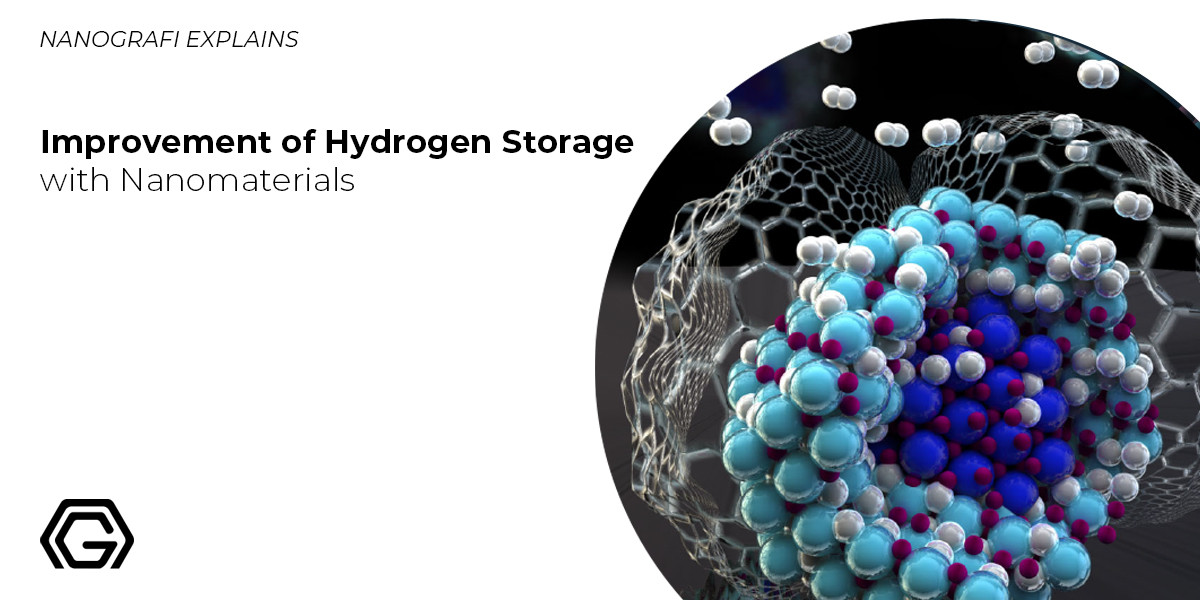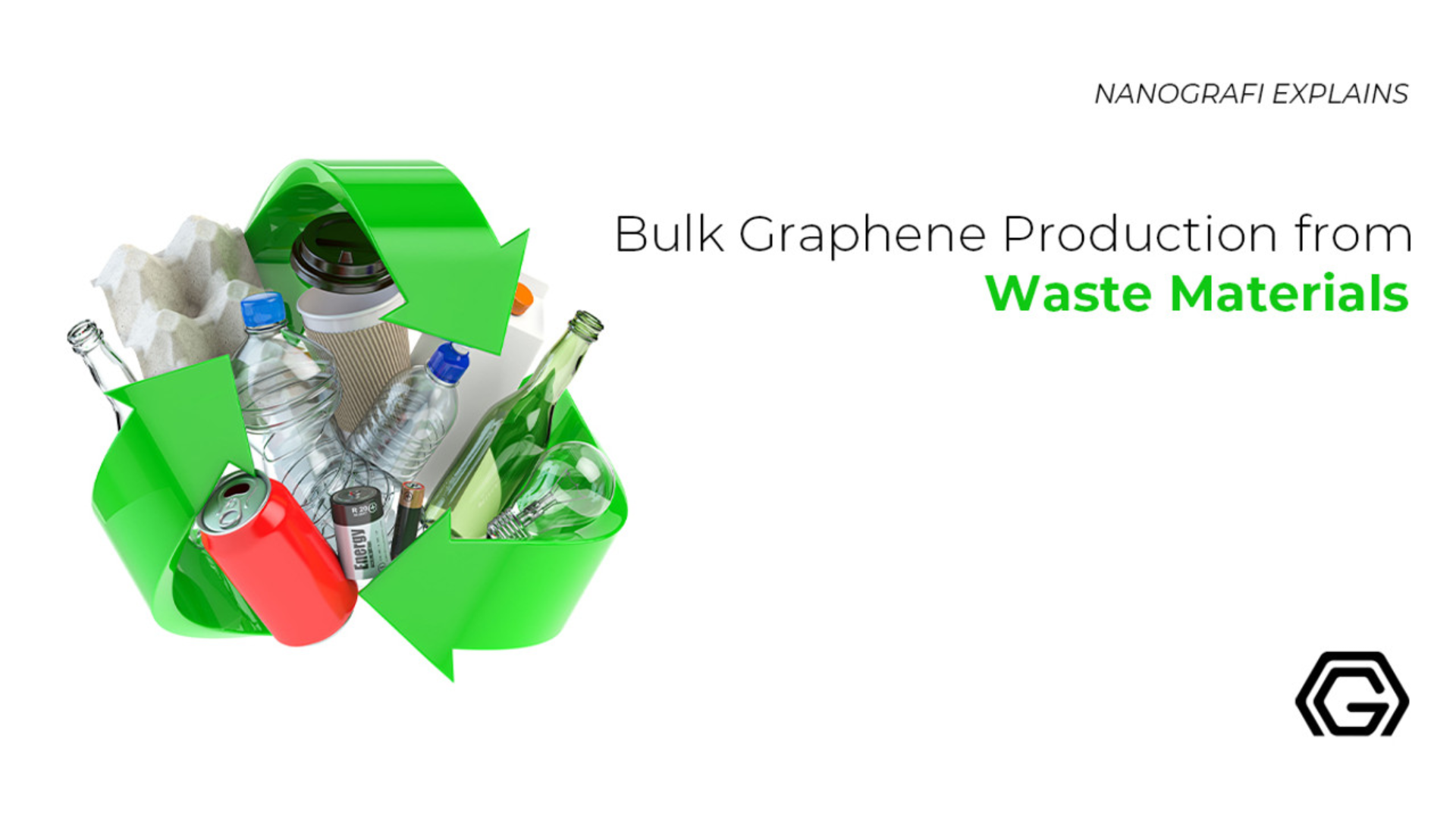Improvement of Hydrogen Storage with Nanomaterials
Over recent years, nanomaterials got interested due to its unusual electrical, mechanical, electronic, magnetic, surface, and optical properties. These high surface/volume ratio nanomaterials have important implications for storing Hydrogen and energy. Hydrogen is one of the evolving renewable energy sources, and it's abundant, light, storable, and energy-dense.
Metal Hydrides solve the challenges of hydrogen storage and release. Nanostructured systems such as boron nitride nanotubes, carbon nanotubes, nano-magnesium based hydrides, nanotubes, carbon nanocomposites/complex hydride, nanocomposite based polymer, alanates, and organic frameworks of metal are known as possible applicants for hydrogen storage in great quantities. The latest researches showed that if certain chemical and physical effects of nanoscale are used efficiently, nanoscale materials will provide benefits. This article focuses on nanomaterials' applications of storing molecular or atomic Hydrogen. Also, to improve the hydrogen reaction kinetics and thermodynamics, nano-crystallinity synergistic effects, and doping of nanocatalyst on complex hydrides or metal are discussed.
Introduction
Hydrogen, as we know, is a safe, convenient source of versatile fuel that is converted simply to the desired form of the energy and does not release any damaging emissions in the process. Effectiveness of the Energy conversion process for both, proton exchange membrane fuel cells and internal combustion engines is increased by Hydrogen. In fuel cells, Hydrogen converts the chemical energy directly into electricity, heat, and water. Nanostructured materials having gravimetric Hydrogen and high volumetric capabilities have been developed during the last decade. Currently, work is being done on the material of hydrogen storage to get the best desorption/absorption kinetics with vital contents of Hydrogen. Metal hydrides characteristics, for example, fast kinetics, fast discharging/charging rate, hydrogenation, cyclic and thermal behaviour, needs to be improved. In initiating a hydrogen economy, the storage of Hydrogen has a critical role.
Improving Hydrogen Storage Materials with Nanoparticles
Hydrogen storage materials should have the following important properties, e.g. lightweight, high volumetric and gravimetric density of Hydrogen, activation ease, fast kinetics, appropriate thermodynamic properties, low temperature of dissociation or decomposition, a high degree of reversibility, and long-term cycling stability. All these properties are for the catalysts and the physicochemical reaction at a molecular or atomic scale toward Hydrogen. Hydrides based on Nanomaterials can store oxygen and has all the properties needed for hydrogen storage. Efforts were made, which resulted in decreased temperature of desorption, cycle life, and enhanced kinetics. Kinetics were enhanced by adding into materials, an appropriate catalyst, also by ball milling with improved surface properties. The purpose of this article is to display possible, promising, and recent trends in hydrogen storage materials that are based on nanomaterials.
Most often, the huge advancements are the tiniest in size. We have to improve hydrogen fuel cell electric vehicles' efficiency as they store Hydrogen as a high-pressure gas currently. Scientists think that a sponge containing the abilities of a solid material like absorption and release Hydrogen would be more efficient. If we're using a hydrogen storage material of this nature, the vehicle would be then able to store high hydrogen amount in it. For being competitive and efficient in the transportation sector, 300 miles should be travelled by a hydrogen fuel cell electric vehicle before refuelling.
Hydrogen Storage in Solid-State Nanomaterials
Generally, Hydrogen could be deposited as the cryogenic liquid, pressurized gas, or maybe in a solid-state material, for example, carbon materials, metal-organic frameworks, and hydrides of metal. Hydrogen storage in such nanomaterials could be done at near-ambient pressures and temperatures with solid-state materials absorbing Hydrogen physically or chemically. Hydrogen storage in gaseous or liquid form needs a container of large size, and it also poses on-board transport applications for important safety problems. Technically, storage in solid-state material is possibly the safest and most suitable method. For hydrogen storage in solid-state nanomaterials, the kinetics and storage capacity intensely depends on the surface interactions that are material-specific, how Hydrogen binds itself to the surface of solid-state material doesn't matter, it can be either by weak dispersive interactions (physisorption) or strong chemical associations (chemisorption). Hydrides of metal as the materials for reversible chemisorption, but limited by poor reaction kinetics or high thermodynamic stability, show different materials for hydrogen storage in solid-state nanomaterials because of high formula hydrogen storage capacities.
Substrate-Free Thin Film
It is a beneficial method for finding new hydrides of metal for hydrogen storage. Therefore, Mg–Ni films, that are free-standing, were fabricated with wide nanoscale grain structures with the help of a mixture of film delaminating process and pulsed laser deposition. Material' oxidation was lessened by working off a sandwiched free-standing film structure having the bottom and top layers consisting of nanometer-thick Pd layers, that act as a catalyst too to encourage hydrogen absorption and its discharge. Free-standing films were found to have improved hydrogen storage capacity over the bulk Mg–Ni target material, while the nano grained films' thermodynamic stability was similar to Mg-Ni. The conclusion suggests that free-standing films and conventional ball-milled powders display a useful platform for hydrogen storage in solid-state nanomaterials.
Due to the large surface area, small pore sizes, open porosity, and surface coating ability, mesoporous materials provide many advantages as compared to other materials. For example, recently, metal-organic frameworks came forward as the foremost capable material for physisorption hydrogen storage. By incorporating the oxide network with the transition metals, aerogels can be readily modified. SiO2 nanoparticles can store the Hydrogen up to 2.5 wt% of itself, due to very large surface area, at liquid nitrogen temperature, through physisorption. For increasing the stored hydrogens' density, chemisorption was introduced into SiO2 nanoparticle networks, meanwhile keeping its high surface area benefit for extra hydrogen storage by means of functionalized physisorption.
If you are interested in the utilization of graphene,
you can read our blog post here.
Carbonaceous Nanomaterials (Carbon Nanotubes, Fullerenes, and Nanofibers)
Research on the carbonaceous materials was initiated worldwide when a report from Dilton et al. on hydrogen storage in the carbon nanotubes came in light for the first time. Activated carbon can absorb Hydrogen physically, and it can be "packed" in the interior of carbon structure and on the surface more tightly than if it has just been filled with. The top outcome attained with carbon nanotubes is hydrogen storage density corresponding to about 10% of the weight of the nanotube. The attractive applicants for hydrogen storage are Carbonaceous materials due to a mixture of low-mass density, high surface area, adsorption ability, and pore microstructure. Interaction can either be based on the overlap of Hydrogen's electron occupied electronic wave function with the carbon's highest occupied molecular orbital, or on van der Walls attractive forces (physisorption), overwhelming the activation energy barrier for dissociation of Hydrogen (chemisorption). In hydrogen chemisorption, it is limited to the ratio of 2 hydrogen atoms per 1 carbon atom meanwhile in hydrogen physisorption; the hydrogen-to-carbon ratio is limited to less than one hydrogen atom per 2 carbon atoms.
Fullerene is a capable material for hydrogen storage due to its ability to react with the Hydrogen through carbon-carbon double bonds' hydrogenation. It's predicted that sixty atoms of Hydrogen can be maximum bind to the outside (exothermally) and inside (endohedrally) of the fullerenes' spherical surface. Therefore, a stable isomer, C60H60 can be formed with the theoretical ~7.7 wt% hydrogen content. At a temp of 823–873 K, the reaction of fullerene hydride is reversible. C60H60 100% conversion shows that 30 moles of hydrogen gas will be discharged from fullerenes hydride compound each mole.
Glass microspheres of 50 μm diameter can also store Hydrogen by heating it enough so that the permeability of glass will be increased to Hydrogen, thus filling the microsphere with Hydrogen. Density of 10 kg H2/m3 and 14% mass fraction can be stored at room temperature, at 25 MPa pressure. 20 kg H2/m3 can be stored at 62 MPa. The release of hydrogen cant happens without increasing permeability again.
Nanostructured Materials
They are possible candidates in the storage of Hydrogen because of their exceptional features like bulk absorption, intra- and inter-grain boundaries, and adsorption on the surface. Nanostructured materials increase the diffusion rate by decreasing the required length of diffusion. Additionally, nanoscale materials offer the possibility of controlling material tailoring parameters independently of their bulk counterparts. Hydrogen storage systems of lightweight are being designed with better characteristics for hydrogen storage.
Nanocatalyst Doping in Complex Borohydrides
Catalytic doping can make reaction kinetics enhanced at low temperatures and can also provide hydrogen storage material, the capacity to store more Hydrogen (>6.0 wt%). The Nanostructured materials that have high surface area are used as the catalytic dopants, as they provide many benefits for physicochemical reactions, for example, adsorption in addition to surface interactions, bulk absorption, low-temperature sorption, rapid kinetics, molecular diffusion through the catalyst of surface and dissociation of the hydrogen atom.
Nano-Catalyst Doping' Synergistic Behaviour and Nano-Crystalline Form of MgH2
Due to the high weight of Hydrogen (7.6%) and Mg abundance, MgH2 has a particular interest. Also, these transition metal particles' nanoscale version through its active sites, offers a mechanism of additional hydrogen sorption. In NaAlH4 or MgH2, CNT/nanocatalyst stabilizes their structure, and a reversible behaviour of hydrogen storage is facilitated by them. Below 330.1C, Bulk MgH2 doesn't release Hydrogen because of its high enthalpy of formation. Thus, in order to improve MgH2 based system' thermodynamics, one major requirement is the reduction in its enthalpy of formation so that it can be a possible candidate for applications of hydrogen storage.
Nanocomposite Conducting Polymers
Polyaniline can store at-least 6–8 wt% of Hydrogen. Also, another study proves that 1.4–1.7 wt% H2 is up-taken by the polymers of intrinsic microscopy.
New Materials Concepts and High-Surface Area Sorbents
At 78 K (−195°C), the capacity of hydrogen storage has been reported as high as 4% weight through an adsorptive mechanism, with a room temperature capacity of approximately 1% weight. Another class of materials for hydrogen storage in a significant amount may be clathrates, which are primarily hydrogen-bonded H2O frameworks. Such materials may be particularly viable for off-board storage of Hydrogen without the need for liquid hydrogen tanks or high pressure.
Conclusion
Different nanostructured materials show excellent potential in applications for the storage of Hydrogen because of its high-surface-area. They also provide many benefits for physicochemical reactions, for instance, absorption in addition to the absorption of bulk, interactions of surface, rapid kinetics, hydrogen atom dissociation, molecular diffusion, and low-temperature sorption through the catalyst of surface, all these properties are needed for hydrogen storage to make little diffusion paths inside the material. Nanosized dopant usage allows higher dispersion of the catalytically active species and therefore helps in reactions of higher mass transfer. Carbon nanotubes have a remarkable microstructure for hydrogen atom/molecule' physisorption inside the bulk and on the surface. In this article, various nanomaterials are discussed briefly for the purpose of hydrogen storage.
To get more information, you can visit Blografi.
References
https://sci-hub.tw/10.1155/2008/950967
https://www.frontiersin.org/research-topics/14656/nanomaterials-for-hydrogen-storage
https://sci-hub.tw/https://doi.org/10.1016/j.pnsc.2012.12.003
https://www.hindawi.com/journals/jnm/2008/950967/
Recent Posts
-
Nanocomposites in Food Packaging
The utilization of nanocomposites in food packaging represents a significant advancement in the fiel …19th Apr 2024 -
What is the Difference Between 7075 and 6061 Aluminum Alloy?
When comparing 7075 aluminum alloy to 6061 aluminum alloy, it's essential to understand their disti …5th Apr 2024 -
Iron-Air Batteries: The Ultimate Guide
Iron-air batteries represent a significant breakthrough in energy storage technology, offering a sus …29th Mar 2024







